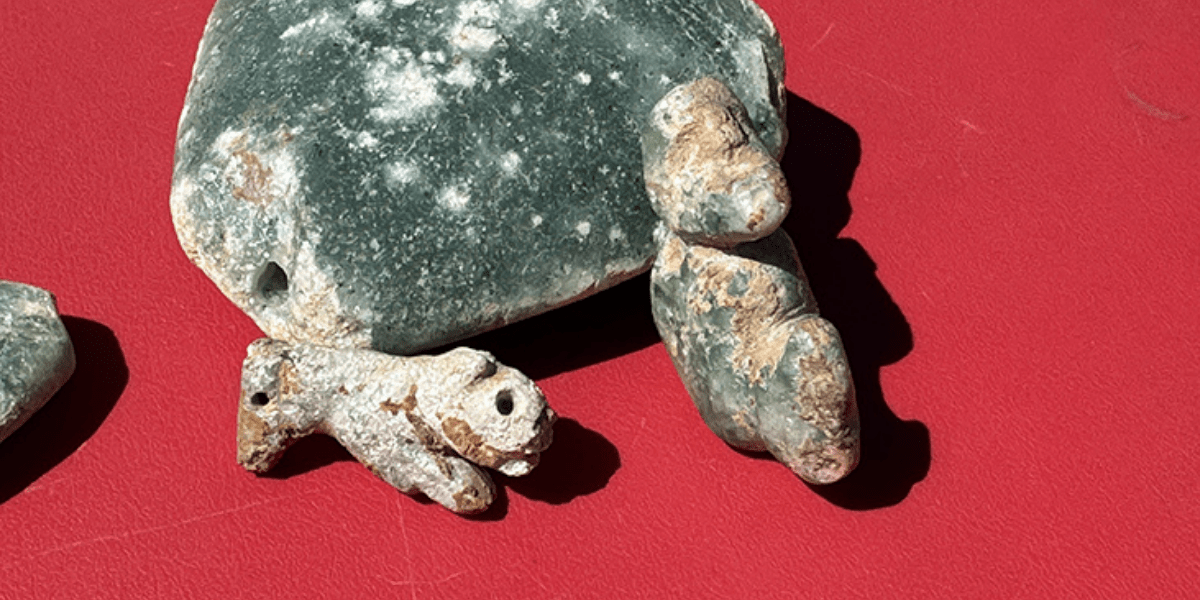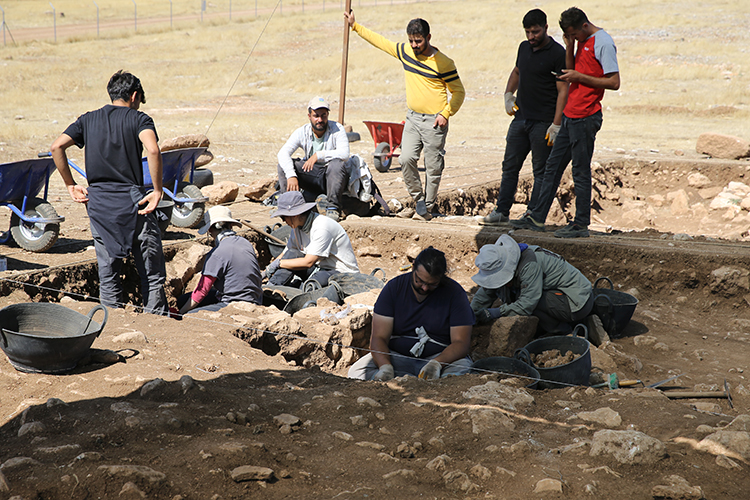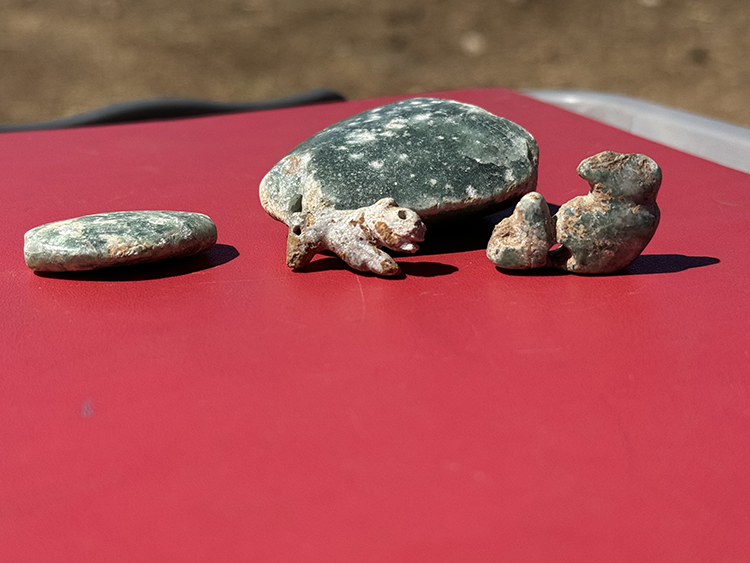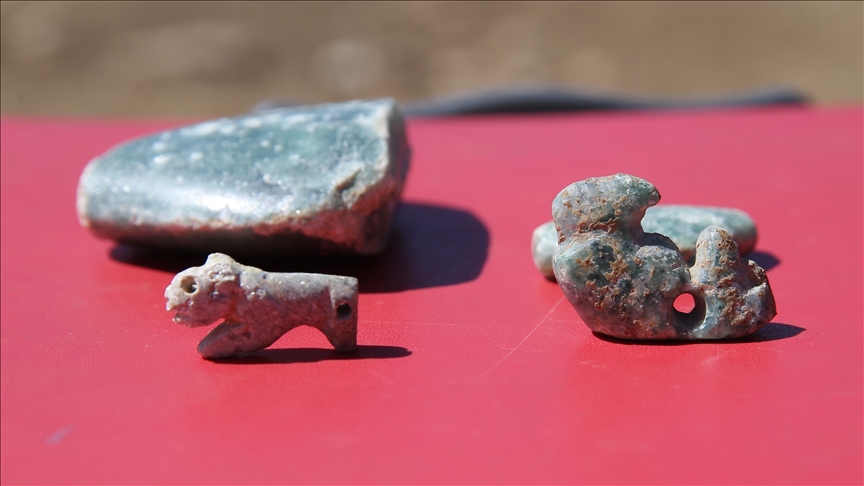
Two 10,000-year-old ornaments with leopard, vulture and human figures found in Sefertepe excavations
During the ongoing excavations at Sefertepe in Şanlıurfa, two ornaments, one with a leopard, the other with a vulture and human figures, dating back to approximately 10 thousand years ago, were discovered.
The excavations at Sefertepe are being carried out within the scope of the “Stone Hills” project under the direction of Assoc. Prof. Dr. Emre Güldoğan, a member of the Department of Prehistoric Archaeology at Istanbul University Faculty of Letters, Department of Archaeology.
In the excavations started in 2021, snake-shaped beads made of different raw materials were unearthed.

Stating that they found leopard and human and vulture-shaped ornaments for the first time this year, excavation head Assoc. Prof. Dr. Güldoğan told AA correspondent.
“This year we came across what we think are two important beads, which are made of jade, an example that we think is from outside the raw materials in our region. One of them is a leopard, one of them is a vulture and a human duo were found engraved on a bead together.”
“Especially the vulture and the human appeared in the form of a slightly reduced size of the human carrying an animal on his back, which we have seen very similar examples in Karahantepe. The leopard is also an animal that is clearly represented on panels on standing stones in settlements such as Sayburç, Karahantepe and Göbeklitepe. It is possible to say that these two finds are important in terms of showing the relations of Sefertepe with the settlements in other stone hills.”

Güldoğan said that they have so far excavated the “Pottery-Free Neolithic Period Phase B” in the Sefertepe excavations and that the two ornaments they found belong to approximately 10 thousand years ago.
The raw material of the ornaments does not belong to the region
Güldoğan said, “People in the ancient period do not use beads differently from today’s people. It is possible to say that they used them as accessories such as bracelets, necklaces and jewelry. Of course, we should not forget the fact that those made from these special raw materials were used in different activities. It will be possible to say something more precise after detailed studies on these.”

Stating that the raw material of the ornaments found does not belong to the region, Güldoğan said, “We know that there are examples that have been included in publications that the two examples are represented by the closest examples from the Israeli-Palestinian region, perhaps further south, outside our geography. Of course, there is a need for a raw material research in the region.”
Cover photo: Eşber Aydın/AA
You may also like
- A 1700-year-old statue of Pan unearthed during the excavations at Polyeuktos in İstanbul
- The granary was found in the ancient city of Sebaste, founded by the first Roman emperor Augustus
- Donalar Kale Kapı Rock Tomb or Donalar Rock Tomb
- Theater emerges as works continue in ancient city of Perinthos
- Urartian King Argishti’s bronze shield revealed the name of an unknown country
- The religious center of Lycia, the ancient city of Letoon
- Who were the Luwians?
- A new study brings a fresh perspective on the Anatolian origin of the Indo-European languages
- Perhaps the oldest thermal treatment center in the world, which has been in continuous use for 2000 years -Basilica Therma Roman Bath or King’s Daughter-
- The largest synagogue of the ancient world, located in the ancient city of Sardis, is being restored











Leave a Reply